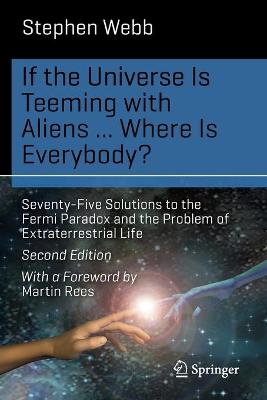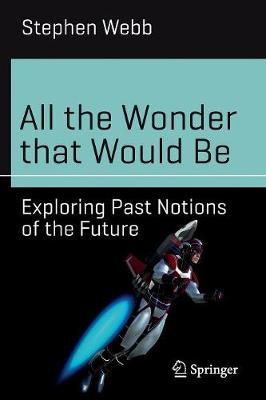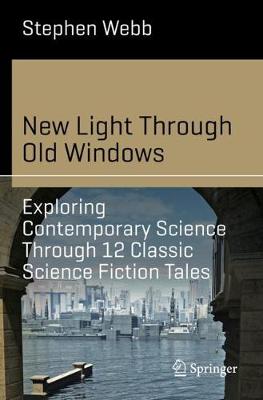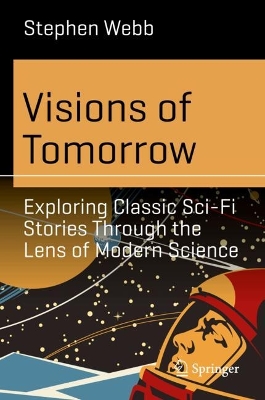Science and Fiction
5 total works
If the Universe Is Teeming with Aliens ... WHERE IS EVERYBODY?
by Stephen Webb
Given the fact that there are perhaps 400 billion stars in our Galaxy alone, and perhaps 400 billion galaxies in the Universe, it stands to reason that somewhere out there, in the 14-billion-year-old cosmos, there is or once was a civilization at least as advanced as our own. The sheer enormity of the numbers almost demands that we accept the truth of this hypothesis. Why, then, have we encountered no evidence, no messages, no artifacts of these extraterrestrials?
In this second, significantly revised and expanded edition of his widely popular book, Webb discusses in detail the (for now!) 75 most cogent and intriguing solutions to Fermi's famous paradox: If the numbers strongly point to the existence of extraterrestrial civilizations, why have we found no evidence of them?
Reviews from the first edition:
"Amidst the plethora of books that treat the possibility of extraterrestrial intelligence, this one by Webb … is outstanding. … Each solution is presented in a very logical, interesting, thorough manner with accompanying explanations and notes that the intelligent layperson can understand. Webb digs into the issues … by considering a very broad set of in-depth solutions that he addresses through an interesting and challenging mode of presentation that stretches the mind. … An excellent book for anyone who has ever asked ‘Are we alone?’." (W. E. Howard III, Choice, March, 2003)
"Fifty ideas are presented … that reveal a clearly reasoned examination of what is known as ‘The Fermi Paradox’. … For anyone who enjoys a good detective story, or using their thinking faculties and stretching the imagination to the limits … ‘Where is everybody’ will be enormously informative and entertaining. … Read this book, and whatever your views are about life elsewhere in the Universe, your appreciation for how special life is here on Earth will be enhanced! A worthy addition to any personal library." (Philip Bridle, BBC Radio, March, 2003)
Since gaining a BSc in physics from the University of Bristol and a PhD in theoretical physics from the University of Manchester, Stephen Webb has worked in a variety of universities in the UK. He is a regular contributor to the Yearbook of Astronomy series and has published an undergraduate textbook on distance determination in astronomy and cosmology as well as several popular science books. His interest in the Fermi paradox combines lifelong interests in both science and science fiction.
It has been argued that science fiction (SF) gives a kind of weather forecast – not the telling of a fortune but rather the rough feeling of what the future might be like. The intention in this book is to consider some of these bygone forecasts made by SF and to use this as a prism through which to view current developments in science and technology.
In each of the ten main chapters - dealing in turn with antigravity, space travel, aliens, time travel, the nature of reality, invisibility, robots, means of transportation, augmentation of the human body, and, last but not least, mad scientists - common assumptions once made by the SF community about how the future would turn out are compared with our modern understanding of various scientific phenomena and, in some cases, with the industrial scaling of computational and technological breakthroughs.
A further intention is to explain how the predictions and expectations of SF were rooted in the scientific orthodoxy of theirday, and use this to explore how our scientific understanding of various topics has developed over time, as well as to demonstrate how the ideas popularized in SF subsequently influenced working scientists.
Since gaining a BSc in physics from the University of Bristol and a PhD in theoretical physics from the University of Manchester, Stephen Webb has worked in a variety of universities in the UK. He is a regular contributor to the Yearbook of Astronomy series and has published an undergraduate textbook on distance determination in astronomy and cosmology as well as several popular science books.
New Light Through Old Windows: Exploring Contemporary Science Through 12 Classic Science Fiction Tales
by Stephen Webb
This book presents the reader with some of the earliest classic SF short stories – all of them published between 1858 and 1934, featuring both well-known and long-forgotten writers – dealing for the first time with topics to which science had (some) answers only at much later stages. This includes aspects of alien life forms, transmogrification, pandemics, life on Mars, android robots, big data, matter transmission and impact events to name but a few.
The short stories are reprinted in full alongside extensive commentaries which also examine some of the latest scientific thinking surrounding the story’s main theme and provide the reader with suggestions for further reading.
If the Universe Is Teeming with Aliens ... Where Is Everybody? Second Edition
by Stephen Webb
This anthology invites readers to revisit twelve timeless stories from visionary authors while pondering the scientific advancements they foreshadowed, making it ideal for fans of both science fiction and science.
In Algernon Blackwood’s A Victim of Higher Space, the concept of extra spatial dimensions is explored, while Miles J. Breuer’s The Gostak and the Doshes examines time as a dimension in relativity. Stanley Waterloo’s Love and a Triangle touches on efforts to communicate with extraterrestrial intelligence, and Max Adeler’s The Fortunate Island raises questions about humanity’s readiness for first contact with alien life. Machine learning and AI feature in Edward L. Sabin’s The Supersensitive Golf Ball, while Saki’s Filboid Studge explores targeted advertising’s transformation through AI. Edward Bellamy’s With the Eyes Shut predicts devices like smartphones and sparks discussions on the future of scientific publishing. G.K. Chesterton’s The Tremendous Adventures of Major Brown delves into augmented, virtual, and mixed reality technologies. Edgar Wallace’s The Black Grippe provides a historical lens on pandemics and communication of scientific uncertainty. J. Arbuthnot Wilson’s PAUSODYNE looks at suspended animation and modern cryonics, while Edgar Allan Poe’s The Facts in the Case of M. Valdemar tackles advances in medical technology and definitions of death. Finally, Guy de Maupassant’s The Horla explores the potential for humanity to be supplanted by new life forms.




